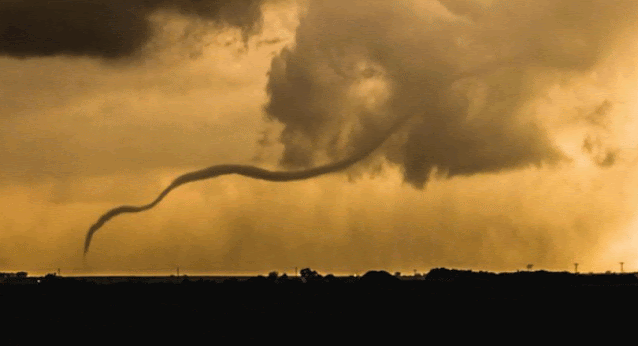How to shoot tornados?, nature photography
As you will imagine, one of the most challenging aspects of photographing tornado's is predicting where and when these weather events will occur. Depending on where you live in the world, extreme weather usually has a season, which allows the photographer to plan a window of opportunity. However, the Mecca for all storm lovers is unquestionably Tornado Alley in the USA, where the main storm months are April through to July. ‘Three main ingredients come together during these months,’ explains Mark. ‘Tropical moist air from the Gulf of Mexico collides with hot dry air from the east and cool dry air aloft from the north.
 |
| How to shoot tornados? |
These air masses stack up over the centre of the country, creating a unique combination of atmospheric ingredients that provide a perfect breeding ground for severe storms. It is a storm photographer’s dream destination.’ There is hope, too, for those who fancy storm-chasing at home. Although the UK has no real storm season, thunderstorms, tornados and waterspouts do occur throughout the year, with periods of temperature change (air and sea) tending to be more favourable, such as spring or autumn. In order to predict where a storm will occur, you will need to master the art of reading weather and pressure charts. ‘Monitor weather forecasts and forum discussions through this excellent site – www.ukweatherworld.co.uk,’ says Mark. ‘It includes links to every website you will need for monitoring weather forecasts and weather in real time.’ For any storm-chasing, it’s worth noting that storms tend to move with weather patterns in a specific direction. Prevailing winds in the UK generally blow from the south-west. Moving storms will therefore travel north-eastwards, so positioning yourself on the south/east flank of a storm will ensure that you remain out of precipitation, and can enjoy the event safely and capture the heart of the storm. However, there may be occasions when capturing a shot of lightning, a rainbow or a storm will involve exposing your kit to the elements. In such cases, you’ll have to rely on the weatherproof qualities of the equipment. Of course, during extreme weather events such as hurricanes, the rulebook goes out the window – everything gets soaked and mitigation is nigh-on impossible.
WEATHER STUDIOS SHOOTING SECRETS
- If you are lucky enough to witness a tornado, conditions are often dark. Additionally, high winds, particularly aloft, make various aspects of the scene fast-moving, so keeping the shutter speed relatively high is important. Gusts of wind can also represent a problem for your camera’s stability. A tripod is a must and in windier conditions it can be very useful to utilise the hook on the bottom of the tripod to add additional weight, in an attempt to improve stability.
- Staying safe in these situations is paramount. Before setting up any shots, take care to understand the direction and speed that the storm is moving; you will then be able to judge how long you can safely remain in certain situations. And always have an escape route mapped out – or two!
















COMMENTS